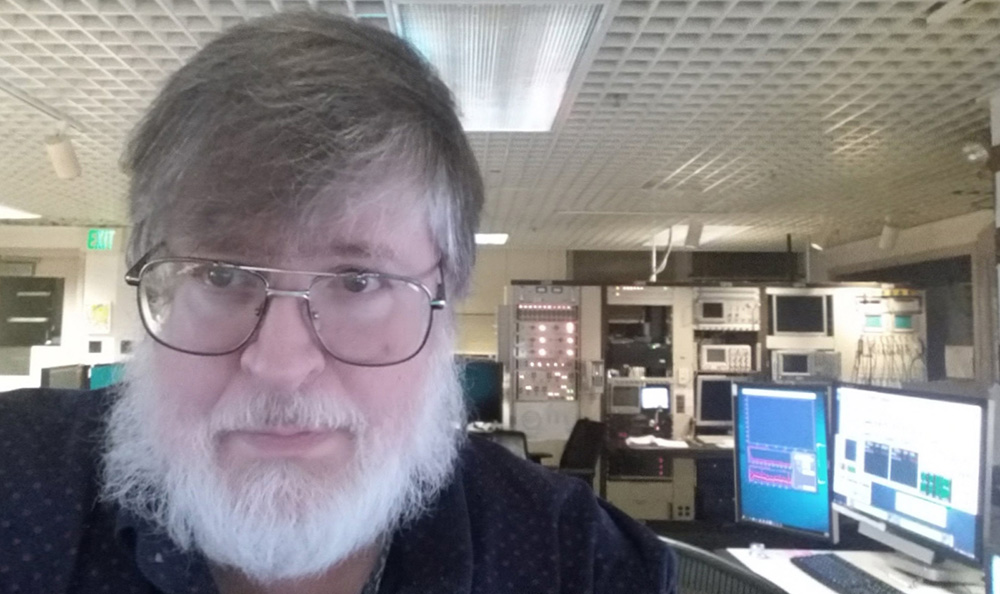By Julie Chao and Aliyah Kovner

David Richardson’s job is literally to make sure the light stays on. But it’s not just any light – it’s a very special X-ray light that could play a crucial role in an eventual treatment for COVID-19. Richardson, an ALS operator, is among the essential workers supporting COVID-19 research.
The ALS is a synchrotron facility operated by Berkeley Lab for the U.S. Department of Energy. It normally gets about 2,000 scientific users a year from around the world, whose experiments are awarded “beam time” if they pass a peer-review proposal process. The ALS uses a particle accelerator to produce extremely bright beams of infrared, ultraviolet, and X-ray light that allow researchers to examine matter – such as proteins – at the molecular and atomic level.
Normally, the ALS would be performing 40 simultaneous experiments spanning fields from physics and chemistry to materials science and biology. Now, only a handful of biology experiments are being performed on behalf of academic researchers as well as scientists from a number of pharmaceutical companies. (Read this article for more information.)
Richardson’s job is to make sure those researchers have access to the beams of light they need. “There’s a lot of work that goes into making sure the beam stays stable and reliable,” he said. “There are many control systems and feedback loops involved. One thing we’re doing in the control room is responding to any alarms that go off and adjusting to any irregularities that arise. In case the beam is lost, which happens about once every 40 hours, we have to find the fault, correct it, and return the beam to our experimenters.”
The ALS typically operates 24/7 with two or three operators per shift, but to comply with shelter-in-place orders, the ALS is providing light only a few days a week with just one operator and one electronics technologist per shift. “We have a lot of shared keyboards and mice, so after each shift we carefully disinfect those with alcohol,” Richardson said, then added, “It’s an honor to be part of this global effort!”
Go here to read about other Superstars supporting COVID-19 research at the Lab.